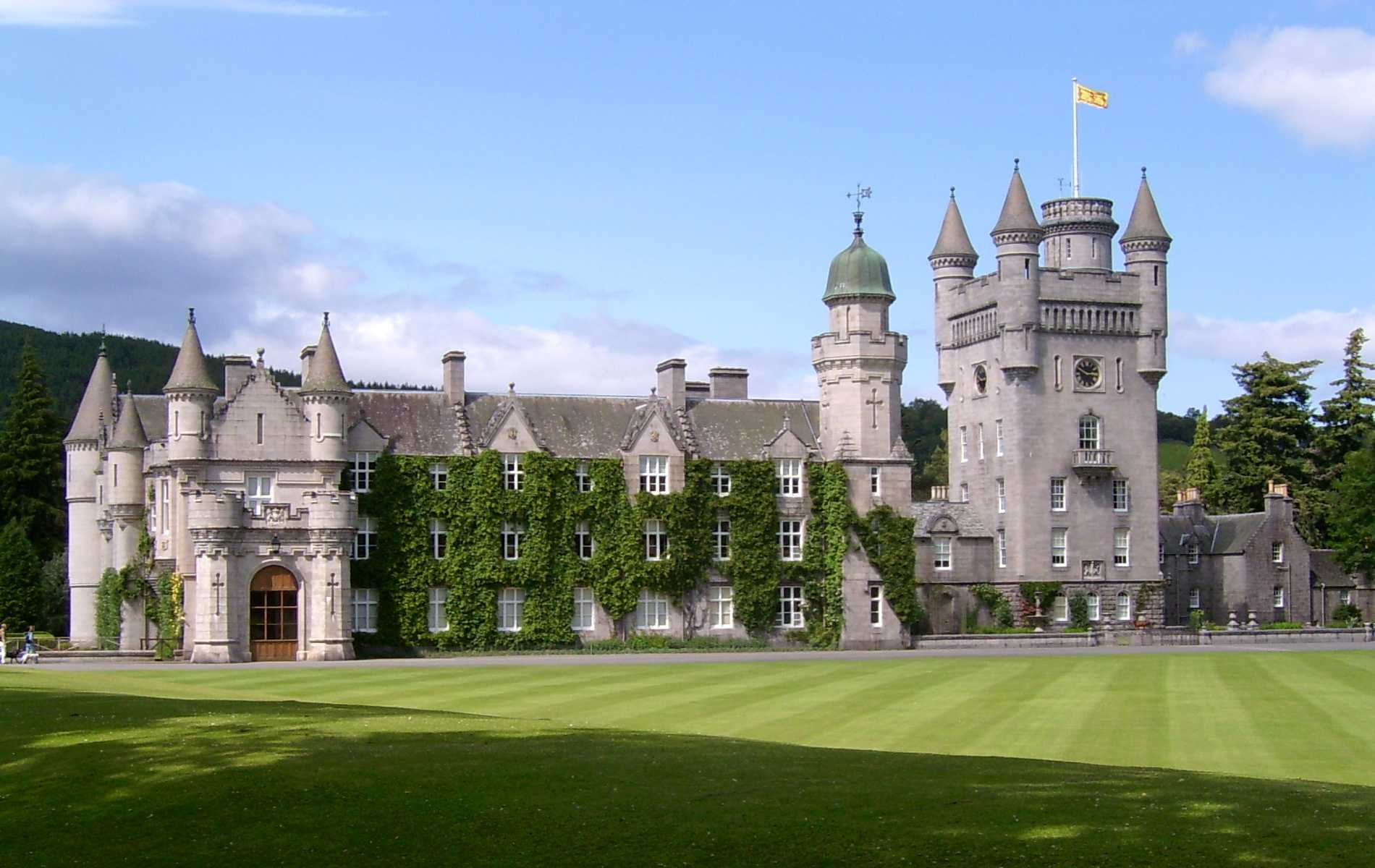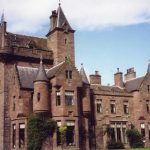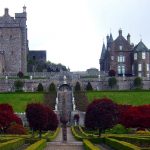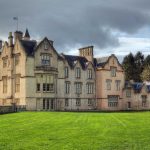cotland is a country with an incredibly rich history. From the countless battles and wars to the uprisings and rebellions, there is no shortage of things to see when it comes to Scotland’s past. Since we’re talking history, here’s a list of some interesting facts about Scotland before we get into which Scottish castles are worth visiting:
1) Nearly 500 years ago, in 1543, Margaret Tudor became Queen of Scotland after she married James IV. At this point in time, the English king Henry VIII had been on the throne for 4 years but Margaret would only stay queen for 2. She wasn’t very well liked and she didn’t have much support from the Scottish people. In fact, most of the men in Scotland joined other countries armies and fought during The War of the Rough Wooing from 1543 to 1551.
2) With all of these men away from home, there were many uprisings or rebellions led by women during this time period. One such rebellion was led by a woman called Jenny Geddes who threw her stool at a minister in church because she disagreed with his sermon about “The Whore of Babylon.” Understandably, she was arrested for assault. Today, there is a statue of her in Edinburgh standing on a stool with one arm akimbo.
3) Another famous woman in Scottish history is Mary, Queen of Scots. She was born in 1542 and she became queen of Scotland when she was only 6 days old and her mother died. She was raised in France before she returned to Scotland to be crowned. She spent a majority of her life there until she was married at the age of 16 to the French dauphin, a marriage contract that left Scotland under the control of France. This type of relationship did not go over well with many people in Scotland and after marrying the dauphin, Mary ruled as queen for a total of six years before being imprisoned for being involved in an invasion plot against England’s Queen Elizabeth I. Mary was executed in 1587 at the age of 44.
4) The Scottish National War Memorial at Edinburgh Castle is the largest monument to honor those who fought and died in World War I and World War II.
Table of Contents
Famous Castles of Scotland
When it comes to castles, Scotland has a few that regularly make it onto people’s top castle lists, but there are many others that are just as spectacular. Here is a list of castles you should consider visiting if you find yourself in Scotland:
Stirling Castle
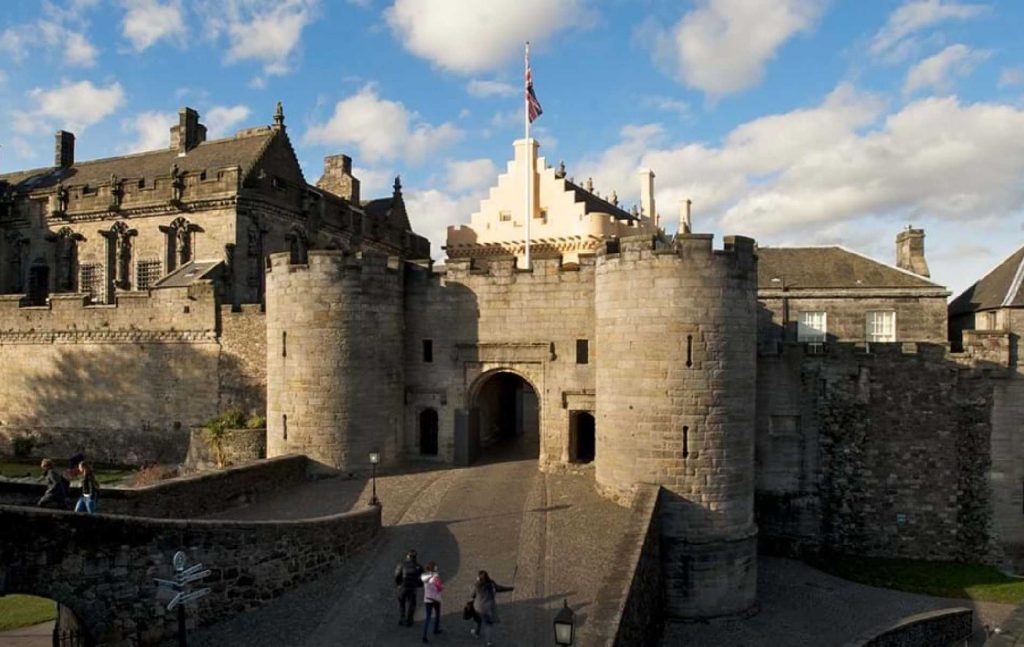
This magnificent fortress is located right in the heart of Stirling and it’s arguably one of the most famous historical buildings in all of Scotland.
Construction began in the 12th century, but it was a constant work in progress for the next 300 years. In the 14th century, most of what you see there now was built and put into place by King Robert the Bruce. It officially became his residence in 1315 and it served as his main residence until 1328 when he was forced to relinquish it to English authority after losing the Battle of Falkirk. While he did not live here year round, he did use this castle as his base for much of his early campaign against England’s Edward I. After being defeated by England at Bannockburn in 1314, Bruce returned to Stirling Castle and made preparations for a siege. In order to withstand a siege, Stirling was built on rocky cliffs, surrounded by a massive ditch, and had the strongest gatehouse in the country.
In 1357, a chapel was built inside of Stirling Castle. This chapel is where King James IV was eventually buried in 1488 after he died fighting against England’s Henry VII at the Battle of Sauchieburn. In 1547, his grave was opened so that his heart could be taken to Notre Dame Cathedral in Paris. When his tomb was opened again in 1818, they found that his heart was still intact and it is still on display inside Notre Dame today. The rest of his body is still interred behind the high altar inside Stirling Castle’s Chapel Royal.
Not only did Stirling Castle play a pivotal role in Scotland’s history, it also has one of the most important collections of art in the country. The Balmoral Collection is on display in the Great Hall and it consists of portraits and artworks that were gathered together by Queen Victoria when she acquired Balmoral Castle.
Even if you have limited time, make sure you visit this castle while you’re in Scotland because it is such an awe-inspiring structure to take in.
Linlithgow Palace
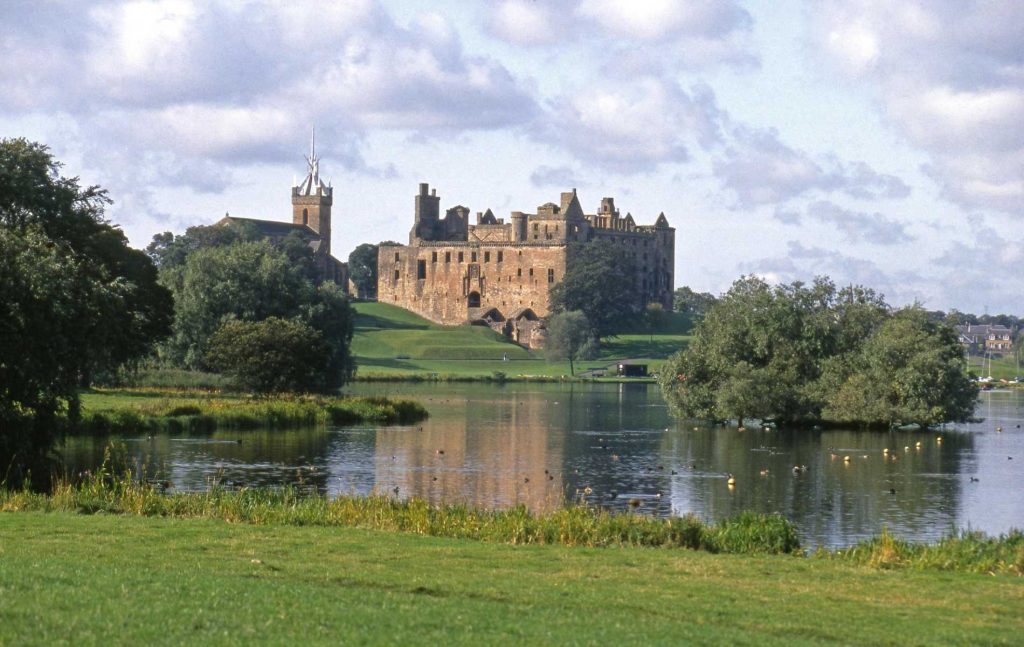
Linlithgow Palace is another example of Scottish architecture on an impressive scale. It’s located in Linlithgow, West Lothian and it was once the official residence of the Kings of Scotland during the Middle Ages. In fact, it’s the oldest inhabited castle in all of Scotland and, since 1971, it has been open to the public.
When you visit Linlithgow Palace you can learn a lot about Scottish history as well as get a good look at some impressive architecture. The palace itself dates back to 12th century and one of its most famous occupiers was King James V who ruled from 1513 to 1542. He was married to a French woman named Mary of Guise and they had six children. When King James V passed away, his widow moved out of Linlithgow Palace after being named the Regent for her young son, who later became King James VI. He stayed here occasionally throughout his life and in 1590 he decided to expand the palace and add a new wing that would include a chapel and apartments for him as monarch.
While most of the renovation work was finished by 1600, he didn’t move into it until 1611. King James VI was succeeded by his daughter, Queen Mary, after he died in 1625. Unfortunately, she passed away only six years later at the age of 40, leaving her baby son to inherit the throne. This is how Charles I became King of Scotland and England at only 13 years of age.
Edinburgh Castle
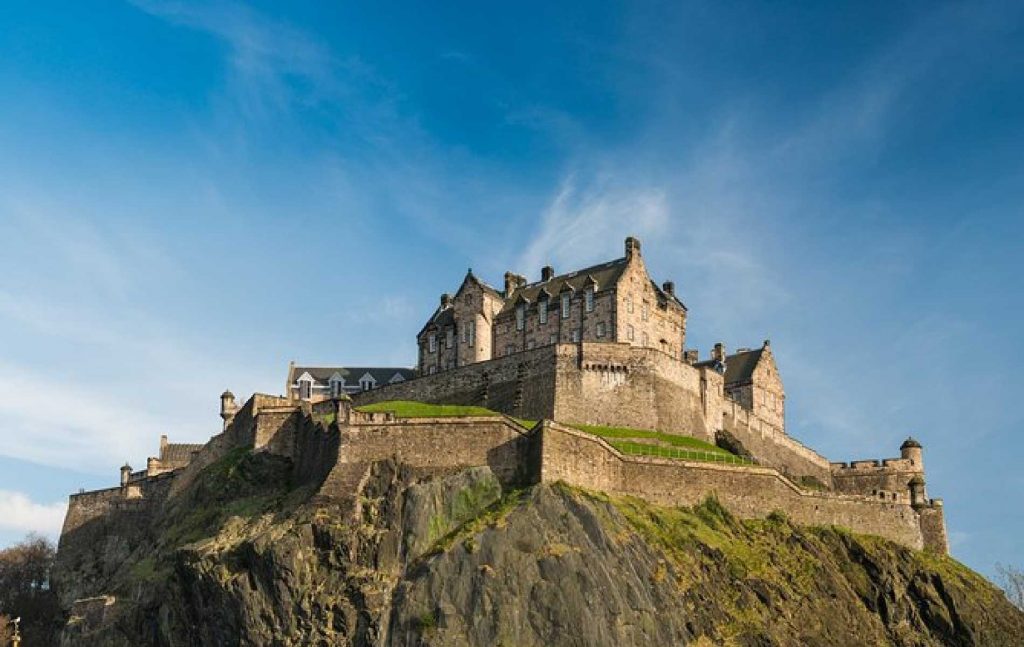
Edinburgh Castle is one of the most famous castles in the world. It dominates its home city, overlooking Edinburgh’s Old Town and New Town. It’s difficult to imagine that it has only been a tourist attraction since the 1800s, when public interest in ancient relics was reawakened by Scottish historian Sir Walter Scott’s novel Ivanhoe.
The castle never actually had a serious military role: it has been used as a court and a fortress, but generally not for defending cities or territory, which was more efficiently done with border fortifications during this period. A substantial castle has occupied this site since at least 1200 AD – the date is disputed – but there is very little documentary evidence about any of these early structures.
The earliest part of the Castle is the Royal Palace, dating from the late 14th century. The original defences comprised a simple wall enclosing a rectangle with towers at the corners. The castle was extended in the early 15th century, and its defensive functions were improved by Sir Alexander Stewart, Duke of Albany (King Robert II’s bastard son).
When King James III tried to suppress a rebellion in 1488 he was besieged by his subjects at Stirling Castle, and had to flee north into exile in England. He returned with an army in 1489 and laid siege to Edinburgh Castle, which fell after a fortnight of bombardment.
Dunnotter Castle
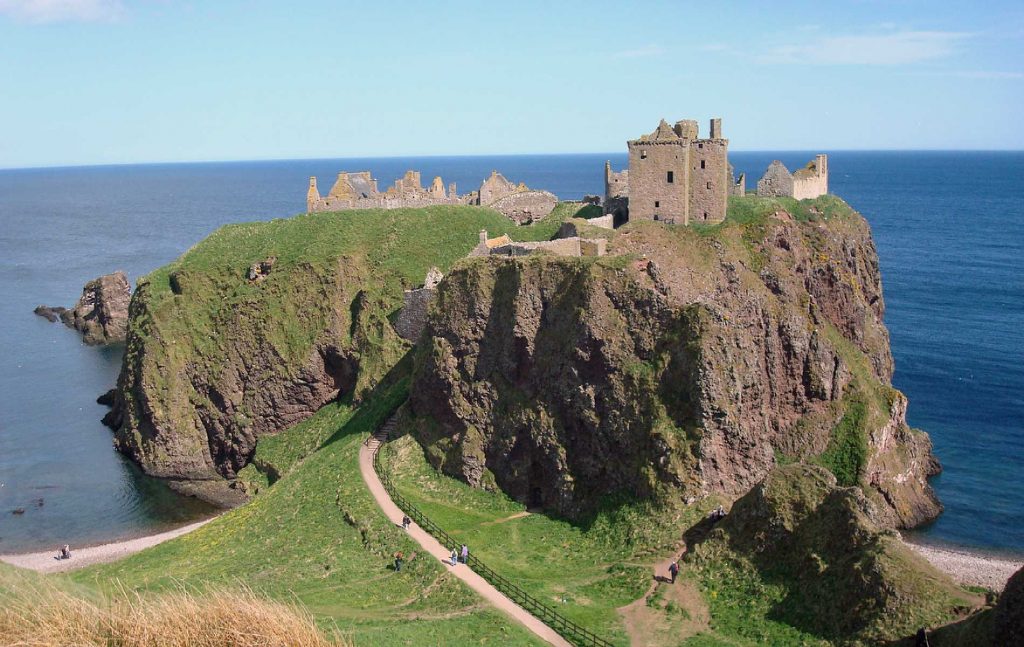
Dunnotter Castle is an abandoned castle that was built in the late 1800s. It is located on a hillside overlooking the village of Dunnotter, in East Lothian, Scotland.
In 1852 William Baird of Newbyth bought the old mansion house and demolished it to build a new mansion and park for his family. The new building took ten years to complete and was designed by Messrs David Bryce, James Salmon and James Gaffin. The castle went through several owners until it ceased to be used in 1963. In 1978 Ian Maxwell Dick bought the castle and opened it up as a public park in 1980. The castle is now owned by the Dick family. The castle is not currently used as a mansion, but it has been used as a restaurant and as a venue for several events.
Some of the building was badly damaged in an earthquake in 1880 and more damage was done to the roof when a fire started accidentally in 1919. The trouble with maintaining Dunnotter Castle over the years have meant that it has deteriorated drastically since it was originally built.
Balmoral Castle
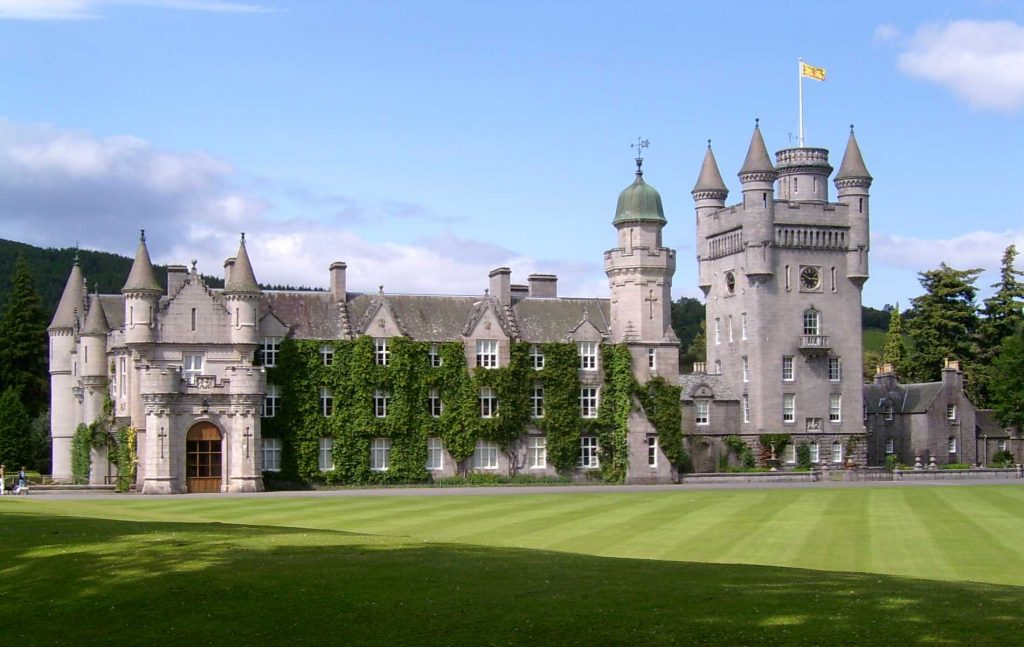
Balmoral Castle is a large estate and castle in Aberdeenshire, Scotland. It is currently the private property of Queen Elizabeth II and holds such royal titles as “the Great House of Scotland” and “the Northern Royal Palace”.
The estate was originally created in 1852 by Prince Albert, consort to Queen Victoria. From 1854 to 1901 it was the official residence for Queen Victoria’s husband Albert Edward, who later became Edward VII. The house was designed by architects William Smith and George Smith with a double facade so that no member of the public could see inside until they had gone through what has been described as “a kind of cordon sanitaire.
The castle has been the property of the royal family ever since, and is associated with many historical events in British history. The Duke and Duchess of York (later King George VI and Queen Elizabeth) first visited their new Balmoral Castle in 1925, and three years later the Duke died at Sandringham. The Castle was again the focus for national attention during World War II when several members of the royal family were evacuated there due to its relatively remote location.
Today, Balmoral is a popular tourist attraction which receives around 250,000 visitors annually from all over the world. It is also well used for weddings and corporate hospitality events in its ballroom.
Inverness Castle

Inverness Castle is an imposing fortress located at the north end of the Royal Mile in the Scottish Highlands. It sits on a ridge overlooking the River Ness and Inverness City.
Inverness Castle is a combination of many different buildings, which date from different centuries and are built in vastly different styles. This contrasts with the traditional view of what a castle should look like- that it should be one rectangular keep with thick walls.
The earliest part of the Castle, built on the site of an earlier fortification in 1124, was a four-storey tower-keep. This sort of keep was often called a L-plan. It is said to have been modeled on that part of Dunstaffnage Castle near Oban which belonged to Malcolm IV.
In 1370, Robert III added a small palace adjoining the original building. At this time, Inverness was a royal castle used as a residence by the kings and queens of Scots. The addition contained two halls: one for feasting and one for state business. It also had luxurious chambers and accommodation for household officials.
Glamis Castle

Glamis Castle is a castle in Angus, Scotland. It is the home of the Earl and Countess of Strathmore, currently Edward Fergus John Murray and his wife Emma Louise Carnegie. The present castle dates from 1679 but historical records suggest that it replaced an earlier one.
It has been in the Murray family since 1372 when King Robert II granted Glamis to William Murray before being inherited by William’s son Patrick who was created 1st Earl of Strathmore on 9 March 1457.
The estate consists today of some 64,000 acres (260 km2) including extensive forests with grouse shooting and deer stalking under licence.
If you enjoyed this article you might also like to read about:
